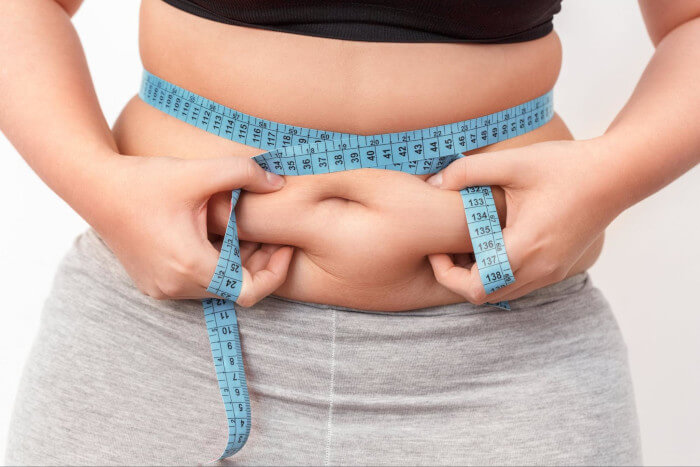
Lifestyle Medicine Advice for Menopause
List of page contents
- What is Menopause
- Commonly experienced menopause symptoms
- Perimenopause
- Surgical Menopause
- Weight gain and menopause
- Vaginal dryness
- Long term health risks
- Stress and adrenal health
- Lifestyle advice to help manage the menopause
- Dietary advice
- Get Active
- Plant oestrogens (phytoestrogens)
- Foods rich in plant oestrogens
- Gut microbiome
- Xenoestrogens
- Some of the common sources of xenoestrogens
- Caffeine
- Alcohol
- Sleep Support
What is Menopause
Menopause is a natural life stage that starts when you’ve not had a period for 12 months. Symptoms usually start 3-4 years before menopause, this is called perimenopause.
Menopausal symptoms are triggered when hormone levels start to reduce. In one study, 80% of menopausal women experienced hot flushes and/or night sweats at some point. These symptoms were found to be worse in those who were smokers or were overweight, as well as women who suffered from anxiety or depression.
Commonly experienced menopause symptoms*
- Hot flushes - a sudden burst of intense heat
- Sleep disruptions / difficulties
- Night sweats
- Headaches
- Mood swings
- Weight gain
- Vaginal dryness
- Loss of sex drive
- Memory and concentration issues
- Brain fog
- Aching joints
*All women will experience menopause differently
Perimenopause
The perimenopause, or “menopausal transition” refers to the years when your body starts making the natural transition towards menopause, the ovaries gradually stop producing the hormone oestrogen, marking the end of your reproductive years. Perimenopause can start at different ages for different women. It generally begins with irregular periods and may include mood swings. The average duration is about 3 to 4 years but can last from a few months to a decade.
Surgical Menopause
Surgery that removes the ovaries triggers an abrupt start to menopause. This happens in all cases regardless of your age at the time of your surgery and is due to the sudden change in hormone levels.
Weight gain and menopause
Many find that entering menopause brings unexpected weight gain. This is partly due to the reduction in muscle mass that happens as a result of lowered levels of oestrogen. Having less muscle leads to a lower metabolic rate which can, in turn, lead to weight gain. Some research has found that being overweight can worsen hot flushes and night sweats. Weight gain isn’t inevitable, but you will probably need to make some adjustments to your exercise routine and diet to help prevent weight gain. Visit our eating plans weight loss page
Vaginal dryness
It is common for a significant percentage of women to experience vaginal dryness that starts around menopause and continues postmenopausally. Tissues can become thinner and more easily irritated. This is most likely due to changes in oestrogen levels. You may experience it as irritation, discomfort, or pain during sex. You can reduce symptoms by trying vaginal moisturisers, lubricants, or, a low-dose vaginal oestrogen cream. More information on our vaginal dryness service page.
Long term health risks
After menopause, women are at higher risk of heart disease. Women often have more fat around their middles after menopause and this contributes to the increased risk. Some research has found that postmenopausal women are at an increased risk of a condition known as metabolic syndrome. This is a cluster of health issues that include high blood pressure, increased cholesterol, it also leads to an increased risk of getting diabetes, fatty liver disease and heart disease. Insulin resistance (your body is not able to process blood sugar so easily) is closely connected to metabolic syndrome.
Stress and adrenal health
Stress can have wide-reaching effects on your menopause experience. Research suggests that women who are experiencing high levels of emotional stress or distress have more severe menopausal symptoms, the higher the stress load the worse the symptoms. If you have been under long term stress it is likely you will experience an earlier menopause.
Our adrenal glands (little walnut-shaped glands that sit on top of our kidneys) produce hormones that help us cope with stress. During menopause, the adrenals help to buffer the effects of falling oestrogen by producing a hormone that can be converted to oestrogen. If you are coping with lots of stress at the time of menopause your adrenal glands will prioritise stress hormone production. This may help to explain why women who are experiencing a lot of stress at the time of menopause have worse menopausal symptoms.
Lifestyle advice to help manage the menopause
Waist measurements can help identify health risk
Simple at-home waist measurement can help you understand your health risk of metabolic syndrome and insulin resistance.
To be healthy, aim for a waist measurement of 80cm (31.5 inches) or less. If your waist measurement is higher than this, take action to reduce your health risks.

This image shows where to place the tape measure to measure your waist but is being pulled a little tight
Find the midpoint between the bottom of your ribs and the top of your hips - this will usually be just above your tummy button
- Place the tape measure around this point
- Inhale and then exhale - take the measurement on your exhale
*make sure not to hold the measure too tight - it should fit snugly on your skin but not be digging in
Dietary advice
Changing what and how you eat can improve insulin sensitivity and reduce your health risks. We recommend reducing sugary snacks and refined carbohydrates. Following a lower carbohydrate approach and boosting sources of healthy fats through a Mediterranean diet can balance your energy and reduce your disease risk. This way of eating can also help you to lose weight if you are overweight.
Get Active
As oestrogen levels naturally reduce during perimenopause, this leads to changes such as an increase in belly fat, and a decrease in bone density, muscle mass and strength. This is why it’s essential to keep and most likely increase activity leading up to and during menopause. As well as including some cardio for heart health, it’s important to include weight-bearing exercises such as walking, rebounding or dancing as the impact supports bone strength. Maintaining and building muscle mass is also key to fight the fat and support your metabolism. This can be done either with weights, body weight or resistance exercises. There are numerous studies that indicate that physical activity can also reduce stress levels.
Plant oestrogens (phytoestrogens)
Plant oestrogens are compounds found in many plant-based foods that can have oestrogen-like effects in your body. The oestrogen component in HRT medication is often sourced from plants. Some evidence suggests eating phytoestrogens may help balance your oestrogen levels, so around the time of menopause, it is worth making sure you include plant oestrogen rich foods regularly in your diet.
Foods rich in plant oestrogens
- Soybeans and edamame beans
- Flaxseeds (ground) and flaxseed oil
- Sesame seeds - tahini is a great option
- Tofu
- Oats
- Mung and alfalfa beans and sprouts
- Lentils
- Berries
Gut microbiome
The bacteria that are present in our guts (the microbiome) affects how much benefit eating plant oestrogens have, Research is beginning to recognise the role of the microbiome in hormone balance during menopause. Diet and lifestyle affect the balance of the microbiome.
Xenoestrogens
Xenoestrogens are environmental pollutants that enter your body mainly via your skin and digestive system. Once in the body, they disrupt oestrogen function both in the short and long term. Modern life means we are constantly being exposed to xenoestrogens without evening realising it, with our main exposure being from foods and drinks. Once xenoestrogens enter our bodies they are able to block or bind to hormone receptors and increase the hormone fluctuations experienced through menopause and perimenopause. Xenoestrogens remain in our bodies for many years stored in our fat cells. Ideally, we recommend reducing your exposure to xenoestrogens as much as possible.
Some of the common sources of xenoestrogens
- Plastics - plastic wrap/ food containers/ drinking cups/ bottles (particularly when heated)
- Food- Pesticides sprayed onto non-organic foods
- Beauty products - makeup/ shampoo/ creams/ body washes etc
If you are concerned about your xenoestrogen exposure, a simple starting point would be to not heat foods or drinks in plastics, switch to using BPA-free plastics, and when replacing beauty products start replacing them with natural beauty care products.
Caffeine
A small study found that consuming caffeine may worsen symptoms of hot flushes and night sweats for some women. Interestingly, the study also noted some benefits from caffeine consumption with fewer symptoms being experienced in relation to mood, memory and concentration. This suggests that caffeine affects us all differently. We would suggest keeping track of how much caffeine you are having whilst monitoring your menopausal symptoms to work out how it affects you.
Alcohol
Moderating how much alcohol your drink may help to reduce some menopausal symptoms such as mood swings, depression and sleep disruption. Similarly to caffeine, alcohol consumption has been found to have a mixed impact on menopausal symptoms. One study reported that women are particularly susceptible to the negative effects of alcohol during perimenopause. Ordinarily, women produce less of the enzyme that breaks down alcohol than men and are more susceptible to the adverse effects of alcohol. Depression is a common symptom of menopause and can be negatively impacted by alcohol. It is worth moderating how much alcohol you drink during this time, whilst also monitoring how alcohol impacts your menopausal symptoms.
Sleep Support
Sleep changes around perimenopause and menopause are common. Up to 80% of menopausal women experience hot flushes, a symptom that can interrupt sleep. Studies indicate that around a quarter of women experience sleep difficulties that are severe enough to be diagnosed as insomnia. A community-based study found that up to 20% of women can experience sleep-disordered breathing as they go through menopause, which can be a serious complaint. Speak to your doctor if you think this is an issue for you.
The most common traditional treatment for severe hot flushes and insomnia related to menopause is HRT (hormone replacement therapy).
There are also non-hormonal treatment options that may be effective and, for less severe symptoms, some simple things you can do to support your sleep include:
- Maintain a regular bedtime schedule with attention giving to relaxing during the hour before bed
- Avoid excessive amounts of stimulants such as caffeine or alcohol close to bedtime
- Limit exposure to blue light in the hours after sunset (light from digital screens)
- Wear loose, natural fibre clothing to bed
- Keep the bedroom cool, dark, quiet, and well ventilated
- Exercise regularly, but not too close to bedtime




